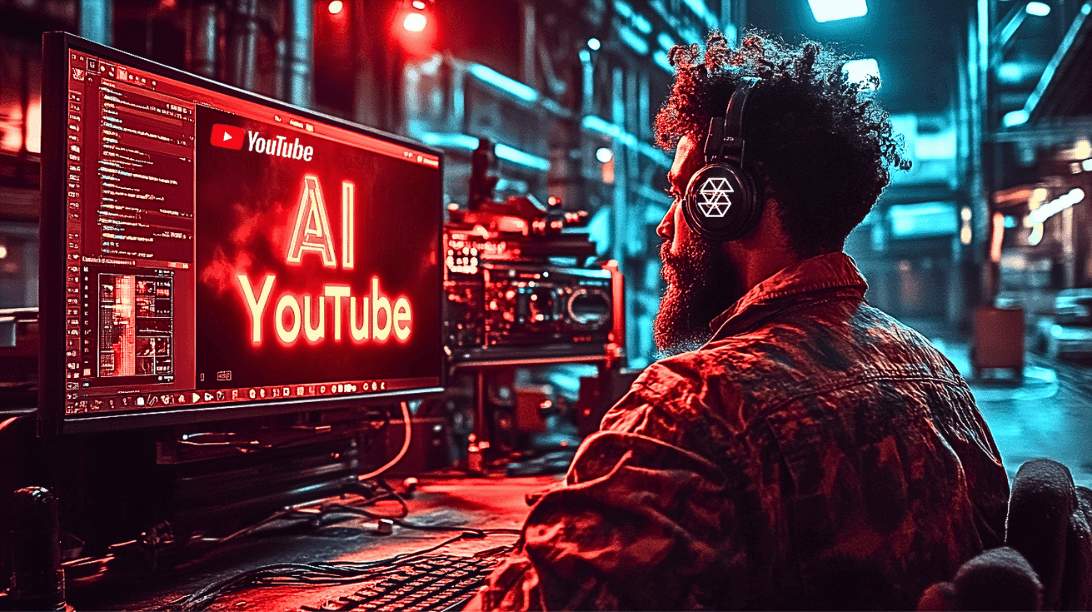What is AutoGen? Our Guide to the Multi-Agent Platform – AI&YOU #61
Use Case: Danish multinational pharmaceutical company Novo Nordisk is using AutoGen to develop a production-ready multi-agent framework.
Multi-agent systems and agentic workflows represent a paradigm shift in AI, offering enhanced flexibility, scalability, and problem-solving capabilities. By distributing tasks among multiple specialized agents, these architectures can tackle complex challenges that were previously difficult or impossible for single-model AI to address effectively.
In this landscape of evolving AI architectures, Microsoft AutoGen emerges as an innovative framework, pushing the boundaries of what’s possible with multi-agent systems.
In this week’s edition of AI&YOU, we are exploring insights from three blogs we published on AI agents:
- What is AutoGen? The Multi-Agent Platform – AI&YOU #61
- Understanding Microsoft AutoGen
- Key features and capabilities of AutogGen
- The multi-agent conversation framework
- The Building Blocks of AutoGen
- 1. Assistant Agent
- 2. User Proxy Agent
- 3. Other agent types
- Integration with LLMs
- Real-World Applications of AutoGen
- How AutoGen and Llama 3 Can Help You Create AI Agents
- Creating AI Agents with AutoGen and Llama 3
- AutoGen vs crewAI: Comparative Analysis
- Framework and Approach
- Agent Customization and Flexibility
- Code Execution Capabilities
- Natural Language Processing Integration
- User Interface and Accessibility
- Learning Curve and Technical Requirements
- Scalability and Performance
- Ideal Use Cases
- Thank you for taking the time to read AI & YOU!
What is AutoGen? The Multi-Agent Platform – AI&YOU #61
AutoGen is a comprehensive platform designed to create and orchestrate multiple capable agents that work in concert to solve complex tasks. At its core, AutoGen enables the development of customizable and conversable agents that can leverage the power of large language models (LLMs) while incorporating human inputs and feedback. This innovative approach allows for the creation of more flexible, powerful, and sophisticated agent systems capable of tackling intricate workflows that were previously challenging for traditional AI approaches.
AutoGen stands out by facilitating seamless collaboration between multiple agents, opening up new possibilities for addressing complex problems. Its multi-agent conversation framework enables a level of inter-agent communication and coordination that mimics human teamwork, allowing for more nuanced and effective problem-solving strategies.
Understanding Microsoft AutoGen
The core concept behind AutoGen is the orchestration of multiple AI agents, each potentially specialized in different areas or equipped with various tools, to collaborate and solve complex tasks.
This multi-agent system mimics human teamwork, where diverse skills and perspectives come together to address challenges. By enabling multiple agents to interact, AutoGen creates a synergistic environment where the collective capabilities of the agents surpass what any single agent could achieve alone.
Key features and capabilities of AutogGen
AutoGen boasts several key features that set it apart in the AI development ecosystem:
Multi-agent architecture: Assistant agents for tasks, user proxy agents for human interaction
Customizable, conversable agents: Task-specific tailoring, natural language interactions
LLM integration: Advanced NLP capabilities
Code execution: Generate, execute, debug code; ideal for software development
Human-in-the-loop functionality: Varying levels of human involvement
Flexible workflow orchestration: Complex, multi-agent collaborations

The multi-agent conversation framework
AutoGen’s core is its multi-agent conversation framework, enabling:
Inter-agent communication: Info exchange, Q&A, teamwork
Task decomposition and delegation: Breaking tasks, role assignments
Collaborative problem-solving: Combined strengths for complex issues
Adaptive workflows: Dynamic approach based on results/new info
Enhanced decision-making: Multiple perspectives, human feedback
This framework represents a paradigm shift in AI system construction. By moving beyond single-model limitations, AutoGen enables more sophisticated, adaptable AI applications that better address real-world complexities.
The Building Blocks of AutoGen
The foundation of AutoGen’s multi-agent conversation framework lies in its customizable and conversable agents.
1. Assistant Agent
The Assistant Agent is a cornerstone of AutoGen’s architecture, primarily responsible for task execution. This agent type excels at code generation, problem-solving, and providing responses to complex queries.
2. User Proxy Agent
Acting as a bridge between human users and the AutoGen system, the User Proxy Agent is crucial for enabling human-in-the-loop interactions. This agent type allows for real-time feedback and guidance from human operators, integrating human input seamlessly into the AI workflow. User Proxy Agents can initiate and manage tasks on behalf of users, interpreting and relaying human feedback to other agents in the system.
3. Other agent types
AutoGen’s flexible framework allows for the creation of various specialized agent types to meet diverse needs. For instance, Critic Agents can evaluate and provide feedback on the output of other agents, while Researcher Agents might gather and synthesize information from various sources. Planner Agents could be employed to break down complex tasks into manageable steps, further enhancing the system’s problem-solving capabilities.
Integration with LLMs
AutoGen’s seamless integration with large language models significantly enhances the capabilities of its agents. This integration allows AutoGen to leverage advanced natural language processing and generation abilities while maintaining the flexibility and specialization of its multi-agent framework.

Real-World Applications of AutoGen
Software development and debugging
Assistant agents can generate code based on high-level descriptions, while other agents can simultaneously review and debug the generated code. This collaborative approach can significantly speed up the development process and reduce errors.
Data analysis and visualization
Multiple agents can work in concert to process large datasets, identify patterns, and generate insights. One agent might focus on data cleaning and preprocessing, while another specializes in statistical analysis, and a third in creating visualizations.
Automated task solving
By combining the strengths of multiple capable agents, AutoGen can tackle complex, multi-step problems that would be challenging for single-model approaches. For instance, in a customer service scenario, one agent could handle natural language understanding, another could search a knowledge base, and a third could formulate a response, all coordinated seamlessly within the AutoGen framework.
Research and innovation
Researchers can use AutoGen to create sophisticated agent systems that can generate hypotheses, design experiments, analyze results, and even author research papers. The framework’s flexibility allows for rapid prototyping and iteration, accelerating the pace of innovation in fields ranging from drug discovery to materials science.
The ability to create teams of AI agents that can collaborate, reason, and execute code positions AutoGen as a powerful tool for pushing the boundaries of what’s possible in AI application development. Whether for software engineering, data analysis, research, or any field requiring complex problem-solving, AutoGen offers a framework that can adapt to a wide range of challenges and requirements.
How AutoGen and Llama 3 Can Help You Create AI Agents
The combination of AutoGen and Meta’s Llama 3 creates a powerful synergy for developing advanced AI agents. AutoGen’s multi-agent framework provides the structure and orchestration capabilities needed to manage complex workflows, while Llama 3 offers the linguistic intelligence required for sophisticated natural language interactions.
This combination allows developers to:
Create multi-agent systems with enhanced language understanding: Agents powered by Llama 3 can communicate more effectively within AutoGen’s collaborative environment.
Handle complex LLM workflows with greater efficiency: AutoGen’s workflow management capabilities, combined with Llama 3’s processing power, enable the handling of intricate, language-intensive tasks.
Develop more versatile and adaptable AI solutions: The flexibility of AutoGen’s framework, coupled with Llama 3’s advanced language capabilities, allows for the creation of AI agents that can tackle a wide range of challenges across various domains.
By leveraging the strengths of both AutoGen and Llama 3, developers can create AI agents that are not only more capable and efficient but also more adaptable to the evolving needs of modern applications. This powerful combination sets the stage for a new generation of AI solutions that can handle increasingly complex tasks while providing more natural and intuitive interactions with users.

Creating AI Agents with AutoGen and Llama 3
To create AI agents with AutoGen and Llama 3, set up a development environment by installing AutoGen, configuring Llama 3 access, establishing API connections, and preparing a secure environment for code generation and execution.
Designing multi-agent systems: Define specific roles for each agent, plan their communication and collaboration, integrate Llama 3’s capabilities, and implement human-in-the-loop features within AutoGen’s flexible framework.
Implementing complex workflows: Break down your project into manageable subtasks, visualize information flow and decision-making processes, develop error handling mechanisms, design for scalability, and integrate Llama 3’s advanced language processing capabilities to enhance performance.
AutoGen vs crewAI: Comparative Analysis
Two prominent players in the AI agent space are AutoGen and crewAI. Both platforms offer unique approaches to creating AI agents, but they cater to different user needs and have distinct features. AutoGen, an open-source framework from Microsoft, enables the development of LLM applications using multiple conversing agents. On the other hand, crewAI is a platform designed for orchestrating role-playing autonomous AI agents that collaborate to automate tasks.
Framework and Approach
AutoGen: An open-source framework providing developers with tools to build multi-agent systems, supporting diverse conversation patterns and customizable agents.
crewAI: A structured platform for creating and managing AI agents, allowing users to define agents with specific roles, goals, and backstories.
Agent Customization and Flexibility
AutoGen: Offers extensive customization options, giving developers full control over agent definition, LLM integration, and conversation flows.
crewAI: Provides a user-friendly interface for designing agents with defined roles and goals, simplifying the process of creating diverse agent teams.
Code Execution Capabilities
AutoGen: Features containerized code execution, allowing agents to safely run LLM-generated code, crucial for tasks involving data analysis or complex computations.
crewAI: Integrates with LangChain tools like Python REPL and Bearly Code Interpreter for executing LLM-generated code, providing valuable code execution capabilities for many use cases.
Natural Language Processing Integration
AutoGen: Allows for deep integration with various LLMs, giving developers flexibility to choose and fine-tune models that best fit their needs.
crewAI: Built on LangChain, provides a streamlined approach to natural language processing, offering out-of-the-box solutions for common NLP tasks.
User Interface and Accessibility
AutoGen: Requires a higher level of technical expertise, with developers interacting with the framework primarily through code.
crewAI: Provides an intuitive and user-friendly interface, making it accessible to a broader audience, including business users and those with limited coding experience.
Learning Curve and Technical Requirements
AutoGen: Has a steeper learning curve, requiring proficiency in Python and a good understanding of AI concepts and LLM architectures.
crewAI: Takes a more accessible approach, offering a user-friendly interface that reduces the need for extensive coding.
Scalability and Performance
AutoGen: Scalability is enhanced by its ability to integrate with Azure OpenAI Service, allowing developers to leverage cloud resources for handling large-scale agent operations and complex LLM workflows.
crewAI: Offers production-ready features through its CrewAI+ offering, including capabilities like webhooks, gRPC support, and detailed metrics, simplifying the process of scaling AI agent operations for businesses.
Ideal Use Cases
AutoGen: Shines in scenarios requiring sophisticated problem-solving capabilities, such as scientific research or fields like bioinformatics or climate modeling where complex computations are common.
crewAI: Excels in streamlining and automating business workflows, making it easier for non-technical teams to implement AI-driven automation across various business processes.
Thank you for taking the time to read AI & YOU!
For even more content on enterprise AI, including infographics, stats, how-to guides, articles, and videos, follow Skim AI on LinkedIn
Are you a Founder, CEO, Venture Capitalist, or Investor seeking AI Advisory, Fractional AI Development or Due Diligence services? Get the guidance you need to make informed decisions about your company’s AI product strategy & investment opportunities.
We build custom AI solutions for Venture Capital and Private Equity backed companies in the following industries: Medical Technology, News/Content Aggregation, Film & Photo Production, Educational Technology, Legal Technology, Fintech & Cryptocurrency.






